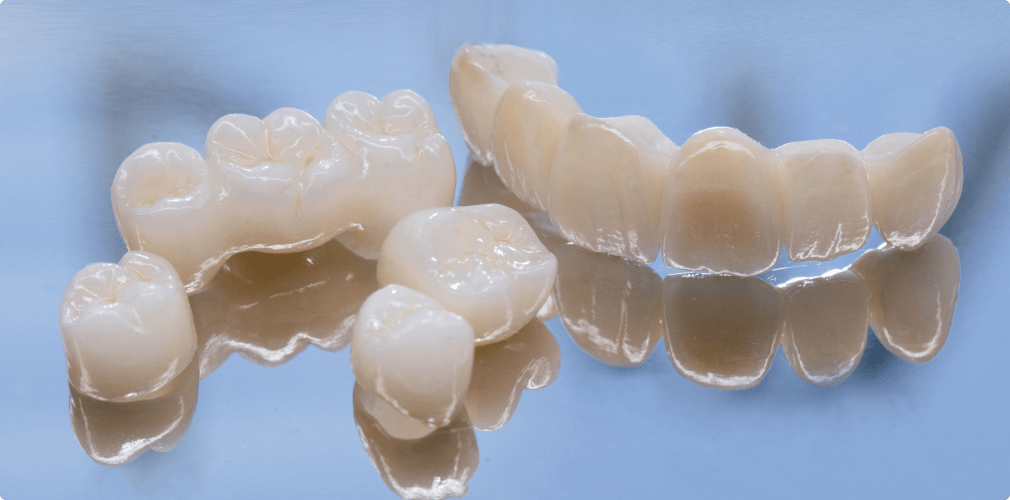Ceramic dentures
Prosthetics is the part of the dental surgeon’s work that allows you to replace, restore or change your teeth: whether from a functional point of view because they’re damaged or missing, or to improve the aesthetics of your smile to suit you. Prosthetics are central to our approach to treatment.
There are a multitude of prosthesis types to suit every clinical situation. The main types of prosthesis on offer include fixed and removable prostheses.

Fixed (or conjoint) prosthesis
This is the most commonly requested category of prosthesis, as it is the most comfortable. It’s also the most aesthetically pleasing, but the use of implants has enabled the removable prosthesis to improve in this respect. Depending on the materials used, fixed prostheses can be bonded, cemented or screw-retained (on implants). In all cases, these prostheses do not move: there’s no need to remove them to clean them, and they can be maintained just like natural teeth. These include veneers, inlays/onlays, crowns and bridges.
Removable prostheses (or adjuncts)
In everyday language, these are called dentures. These are resin or metal-framed appliances that replace missing teeth. These prostheses rest on the teeth and/or gums: on the teeth, using small clasps, for example; on the gums, using a suction cup effect with saliva.
These appliances are either partial, to replace a few teeth, or complete, to make up for the total absence of teeth. They can be performed for temporary purposes (while waiting for implants or healing) or for long-term use. It should be noted that removable prostheses are destined to be replaced, usually after several years, depending on wear. The dental surgeon will be able to advise his patient on this point.
The major difference with fixed prostheses is comfort
First of all, removable dentures are wearable prostheses, whereas fixed dentures live in your mouth almost like your real teeth. Secondly, removable appliances can alter taste perception and, over the long term, lead to bone and soft tissue subsidence (which canresult ininstability and reduced retention of the current or future prosthesis). However, these prostheses often cost less than multiple fixed prostheses when more than one or two teeth need to be replaced.
Also worth seeing: Bone Augmentation, Sinus Lift & PRF at Dr Maire’s dental office in Lisbon